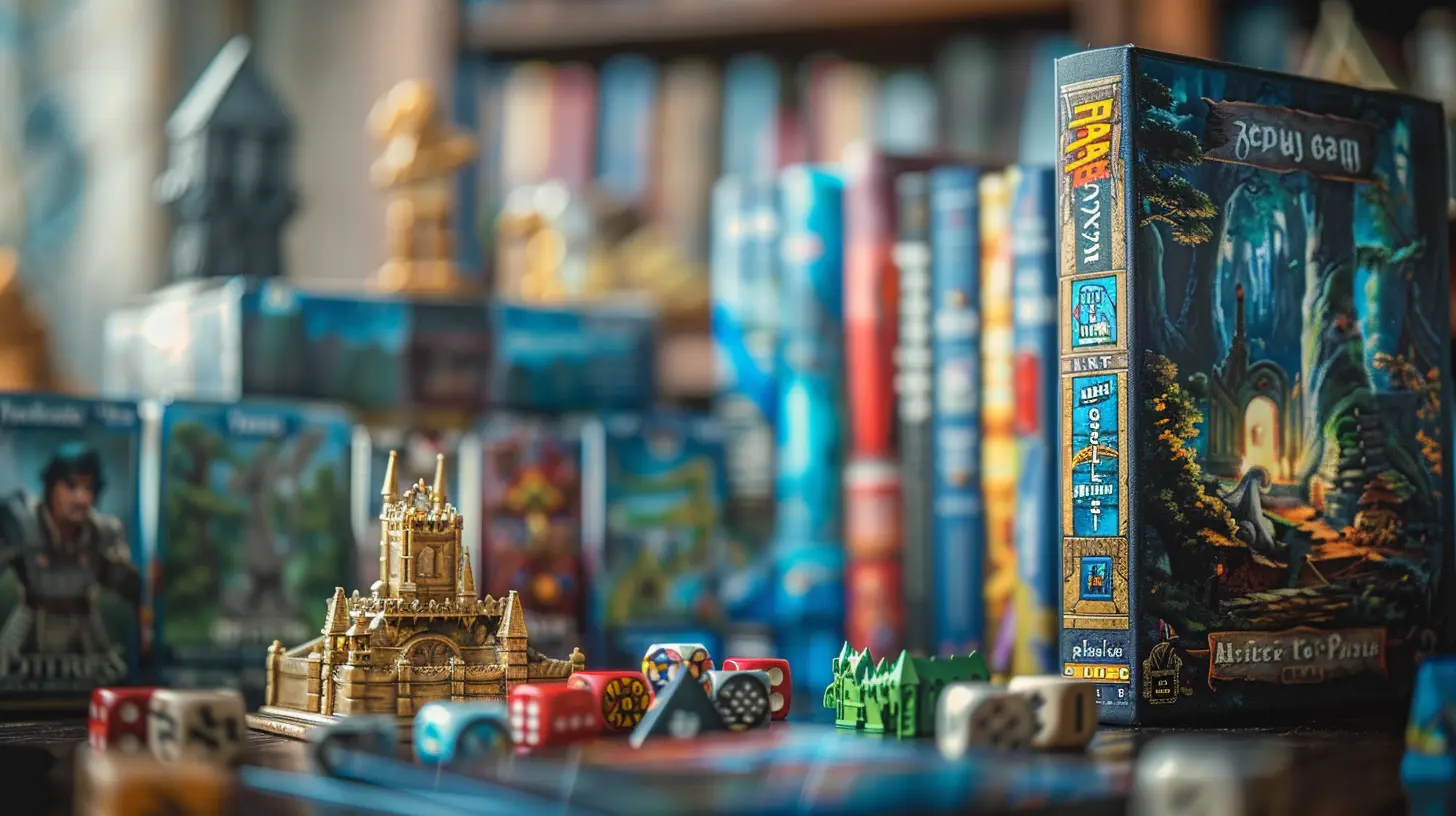How to Choose the Right Kickstarter Games to Back
3 June 2025
Kickstarter has become a treasure trove of innovative, quirky, and promising games. From card games that promise endless fun during family nights to expansive tabletop RPGs built for hardcore gamers, the platform is bursting with ideas waiting to be funded. But let’s be real—backing a Kickstarter game can sometimes feel like rolling the dice. With thousands of projects vying for your attention, how do you decide which ones are genuinely worth your hard-earned cash? Well, that’s exactly what we’ll dive into today. Let’s talk about how to sift through the noise and back games you won’t regret.
Why Back Kickstarter Games in the First Place?
Kickstarter games are more than just pre-orders; they’re a chance to support creativity and innovation. Developers, who would otherwise struggle to find funding through traditional means, bring their ideas directly to fans who share their passion. It’s like being a co-pilot on a journey to bring something amazing to life!Backing a game on Kickstarter often means you get in early, with perks like exclusive content, limited-edition rewards, or simply the satisfaction of being part of something new. But with great opportunity comes great responsibility (thanks, Uncle Ben). It’s up to you to make sure your money is going toward something truly worthwhile. No one wants to end up with a game that arrives years late—or worse, doesn’t arrive at all.
The Risks of Backing Kickstarter Games
Before we talk about how to spot the gems, let’s get one thing straight: Kickstarter is not a store. Backing a project doesn’t guarantee you’ll get the product… or even that it’ll be any good. Yeah, that’s a bit of a buzzkill, but it’s the reality.Plenty of games launched on Kickstarter have delivered beyond expectations, but there are also some trainwrecks out there. Ever hear of The Doom That Came to Atlantic City? Backers got burned when the creators ran out of funds. That’s why it’s essential to do your homework before clicking that tempting “Back This Project” button.
So, how do you minimize those risks? Let me walk you through it.
1. Know Your Preferences
Look, everyone has different tastes in games. Some people are all about fast-paced party games, while others love sprawling strategy epics. Before diving into Kickstarter, take a moment to think about the kind of experience you’re looking for.Are you into co-op games to play with friends? Or maybe something you can enjoy solo? Do you have room for a massive board game with 300 pieces, or do you prefer something compact? Answering these questions will act like your personal compass, helping you navigate the sea of projects.
2. Research the Creator’s Track Record
Would you hand your money to a stranger on the street, no questions asked? Probably not. Treat Kickstarter creators the same way. Start by checking their profiles. Have they created projects before? Did those projects successfully deliver?Creators with a strong track record are more likely to deliver on their promises. If they’ve completed previous campaigns and satisfied backers, that’s a good sign. On the flip side, if it’s their first project and they have zero experience, proceed with caution. We all love supporting newcomers, but it’s a bigger risk.
3. Read the Campaign Page Thoroughly
Don’t skim the page! The campaign page is essentially the creator’s pitch to you, and it’s packed with important details. Look for the following:- Gameplay Details: Is the game concept unique? Is the gameplay explained clearly? (Pro tip: if you don’t “get” the game after reading about it, that’s a red flag.)
- Component Quality: Does it include things like high-quality cards, dice, or miniatures?
- Stretch Goals: Are they realistic or overly ambitious? Stretch goals can add cool extras but can also delay production timelines.
If you leave the page with more questions than answers, it’s probably not a great sign.
4. Watch the Videos and Try the Print-and-Play Version
Most Kickstarter game campaigns include a video and, sometimes, a print-and-play version of the game. The video is your chance to “meet” the creators and see their passion for the project. Are they excited? Knowledgeable? Trustworthy?If there’s a print-and-play version, don’t skip it! It’s like taking a game for a test drive. It’ll give you a hands-on feel for the mechanics and whether the game lives up to the hype. Plus, it’s fun to try before you buy.
5. Analyze the Funding Goal and Timeline
Here’s where it gets a bit technical. Pay attention to the campaign’s funding goal. Is it realistic? A game asking for $10,000 to produce elaborate miniatures probably isn’t going to cut it. Conversely, a project asking for $500,000 could be biting off more than it can chew.Also, look at the timeline. Does the estimated delivery date make sense? Be skeptical of overly optimistic timelines. Manufacturing and shipping take time, and delays are almost inevitable. If a campaign is promising delivery within a few months, proceed with caution.
6. Engage with the Community
The comments and updates sections are gold mines of information. Check out what backers are saying—are they excited or concerned? Are the creators active and responsive to questions? A creator willing to engage with their backers shows they care about transparency and collaboration.Here’s a tip: Don’t be afraid to ask questions in the comments! Whether it’s about shipping costs or gameplay details, creators who respond promptly and thoroughly are more likely to be trustworthy.
7. Beware of Red Flags
While browsing campaigns, keep your eyes peeled for warning signs. Some of the biggest red flags include:- Unrealistic Promises: If a game sounds too good to be true, it probably is.
- Lack of Clarity: If the campaign page is vague or poorly written, that’s a bad omen.
- Absence of Prototypes: If there’s no gameplay footage or a working prototype, the project might be in its infancy—meaning it could take years to materialize, if it ever does.
A little skepticism can go a long way.
8. Consider Your Budget
We all have financial limits. It’s easy to get swept up in the excitement of backing a cool project, but be realistic. Remember that most Kickstarter campaigns require you to pay upfront and that shipping costs can sometimes be hefty.Ask yourself: Do I really want to spend $200 on this game, or would I rather stick to a $30 project? There’s no shame in setting boundaries.
9. Trust Your Gut
At the end of the day, you’ve got to listen to that tiny voice in your head. If you’re excited about a project and it checks all the boxes, go for it! If something feels off, give yourself permission to walk away. FOMO (fear of missing out) is real, but it’s not worth the risk if you’re unsure.10. Wait for Reviews Post-Release
Here’s a pro move: Some backers choose to wait until a game is successfully funded and hits retail shelves before buying it. While you may miss out on Kickstarter exclusives, it’s safer and allows you to see reviews and gameplay impressions before spending money.Wrapping It Up
Backing Kickstarter games is a fun and rewarding experience, but it’s not without challenges. By doing your homework, engaging with the community, and trusting your instincts, you’ll increase your chances of finding a project that’s truly worth your support. Remember, it’s not just about getting a game—it’s about supporting an idea, a creator, and a passion.So, what’s your next move? Go ahead and check out some campaigns, but don’t forget to use these tips. Happy backing!
all images in this post were generated using AI tools
Category:
Kickstarter GamesAuthor:

Emery Larsen
Discussion
rate this article
3 comments
Cora Foster
Research project credibility and community feedback before backing.
June 11, 2025 at 3:44 PM

Emery Larsen
Absolutely! Doing thorough research and gathering community feedback is crucial to ensure the credibility of any Kickstarter project before backing.
Lacey Maddox
Great tips! Excited to back!
June 8, 2025 at 3:50 AM

Emery Larsen
Thank you! I'm glad you found the tips helpful. Happy backing!
Levi Barrett
Great insights! Thoroughly researching game mechanics, creator credibility, and community feedback is essential for making informed Kickstarter backing decisions. Thanks for sharing these tips!
June 6, 2025 at 3:29 PM

Emery Larsen
Thank you! I'm glad you found the tips helpful. Happy backing!



